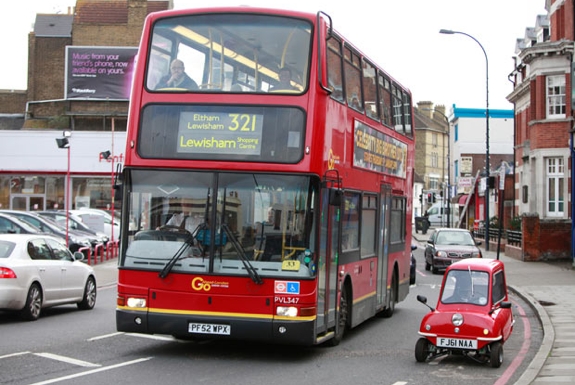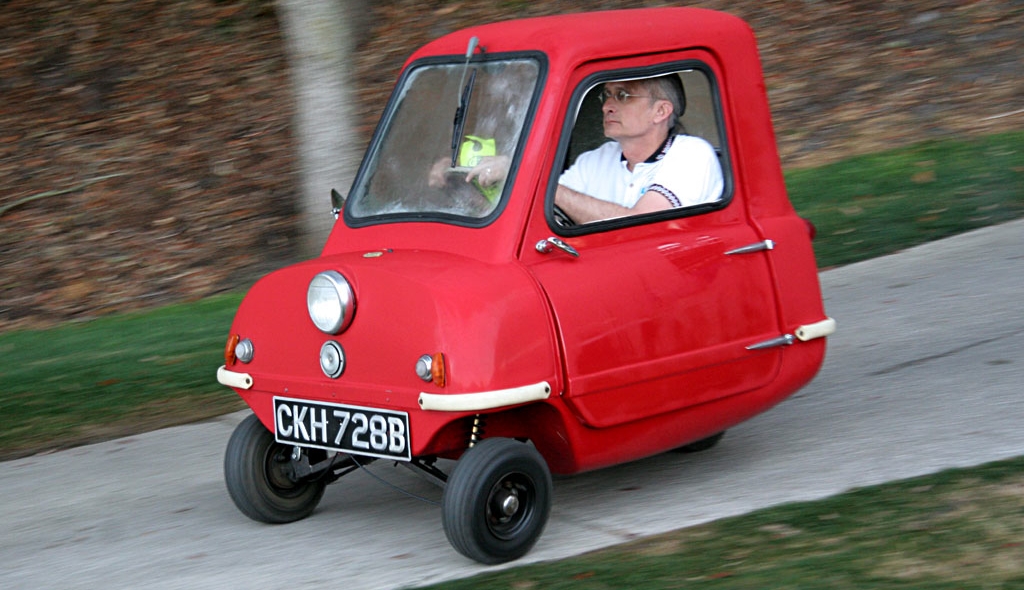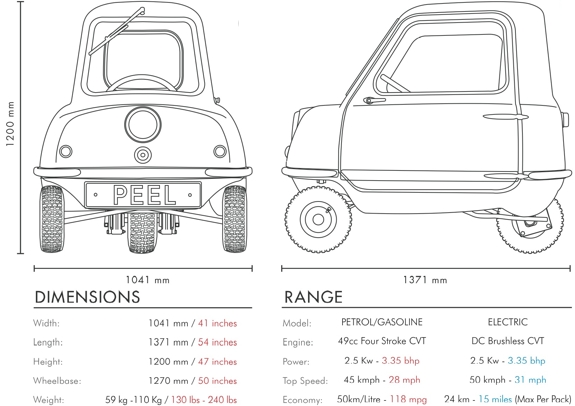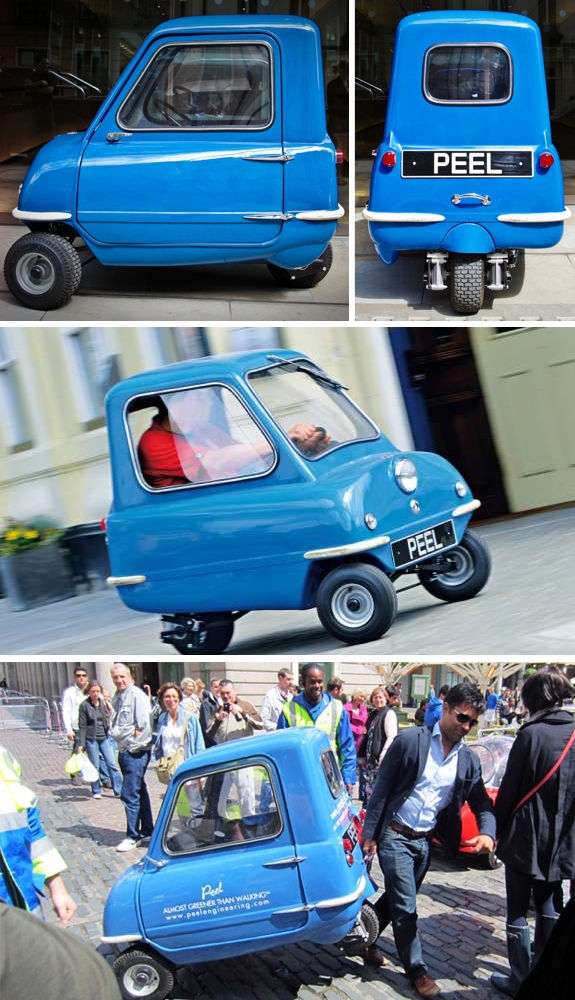The World’s Smallest Street-Legal Production Car

SPOT MORE COOL STUFF:
Cars
| All Tech & Gadget Reviews
“Compact cars” are not, technically, the smallest classification of automobile. Smaller than those are “city cars” — visit your local Smart Car dealer to take one of those for a test drive.
And then there’s a car size classification that’s even smaller: “microcars.” Microcars typically have three wheels, one or two doors and either an electric propulsion system or a petrol engine smaller than 700cc. Sometimes much smaller.
Back in the 1950s and ’60s, a variety of automobile companies — both established and start-ups — developed and manufactured these very small, personal vehicles. Many experts were predicting that microcars would be the wave of the future.
They predicted wrong†. Or, at least it seemed so.
Virtually no new microcar models were produced in the 1970s or in the three decades that followed. But in 2012, the microcar had a tiny reemergence. That’s when one of the original microcar companies, UK-based Peel, began again making the Peel P50. The vehicle is today the world’s smallest street legal production car.
So how small is the Peel P50? Small enough that you could park it inside a reasonably-sized London flat. It’s light enough to lift the front end and pull it along behind you, narrow enough to squeeze into an elevator and shallow enough to put it inside a walk-in closet. See the graphic below for details on the weight, height and other specs.
The reincarnation of the Peel P50 began when two businessmen, Gary Hillman and Faizal Khan, appeared on the Dragons’ Den television program asking for (and receiving) an investment of £80,000. A year later they were hand-building Peel P50s for consumers out of their shop in northern England.
A current-model Peel P50 is remarkably similar to the one last produced in 1965. It has the same 5-inch wheels, same single headlight and single windshield wiper blade, and virtually the same 49cc engine that can zoom the car up to a top speed of 60 km/h (37 mph)‡ in about 10 seconds.
The main difference? In 1965, Peel P50 cost £199 (which is still only about £3,000 after adjusting for inflation). In 2012, you’ll be shelling out at least £12,500.
At that price, it is hard to see the Peel P50 has more than a novelty vehicle. We’d rather have a similarly-priced aforementioned Smart Car. Or you could opt for a moped, which is cheaper, has more storage space and doesn’t require you to curl up into the fetal position to drive. But then a moped doesn’t turn heads. And if there’s one thing the Peel P50 does big, its make an impression.
† Some prognosticators did accurately foresee the day that individuals would want to drive around solo and that households would thus want to have more than one car. They just didn’t imagine that large cars would become affordable enough for so many families to purchase more than one.
‡ The speed of the 2012 Peel P50 is factory-restricted to 45 km/h (28 mph) because, you know, who would ever want to drive a car faster than that? However, when purchasing a new P50 you can ask the factory to remove the restriction.
LEARN MORE | JOIN US ON TWITTER / FACEBOOK / PINTREST / GOOGLE+
Related posts on Spot Cool Stuff:
Car Gadget Review: The PowerLine PowerCup Inverter
Potential Apple iCar Concept Designs
Tablet Computers for Students
The World’s Fastest Electric Car
Elsewhere on the web:


























